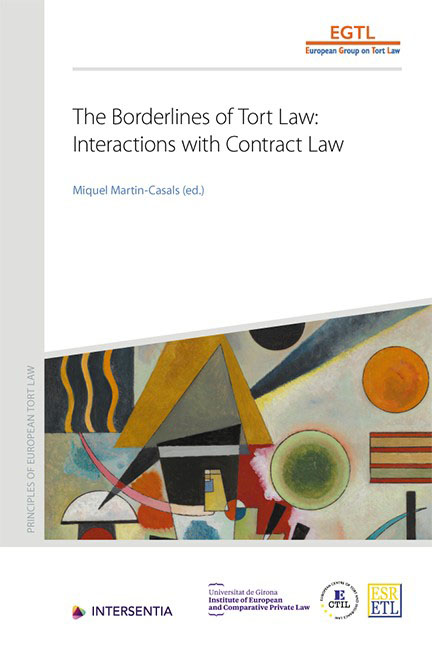Book contents
United States
Published online by Cambridge University Press: 15 November 2019
Summary
In the United States, both tort and contract law are generally matters of state rather than federal law. While there is a common core to both tort and contract doctrines in the US, one can find variation – sometimes narrow but sometimes broad – across the 51 independent state jurisdictions. In this United States country report, we attempt to provide a synthesis of state law while also trying to point out states whose laws deviate significantly from the synthesis.
QUESTIONS
TRACING THE BORDERLINES
The bases for liability in tort and contract are thought of as distinct in the US. The phrase ‘law of obligations’ is largely unknown in the United States. Contractual obligations are derived from the agreement of the parties to a contract that sets forth the bilateral obligations of the parties. By contrast, tort duties are imposed on parties by operation of law. This clean conceptual separation can break down in a number of contexts in which a tort occurs in a relationship where there is also a contract or potential contract between the parties, and where a contract is meant to benefit a third party. Medical and other professional malpractice, products liability, landlords’ obligations for defects in rented premises, implied warranties and other terms in contracts, and contractual waivers of tort liability are among the instances in which this occurs.
A court's characterization of an action as tort or contract matters for several reasons. Statutes of limitations typically limit tort actions to two years from the date of discovery of injury; contract actions typically are given four years from the date of material breach. Insurance contracts and principles of governmental immunity sometimes turn on the nature of the claim. The standard for liability is also quite different – to prevail in the typical tort case, a plaintiff must prove negligence; breach of contract requires no such proof, but merely that the defendant breached the agreed-upon terms. In addition, the applicable damages rules are different – rules regarding mitigation, scope of liability (proximate cause), non-pecuniary losses, and punitive damages are much more permissive in the tort context than in contract. Indeed, even some rules that tort and contract actions share – eg causation – are applied differently in sometimes outcome-determinative ways.
- Type
- Chapter
- Information
- The Borderlines of Tort LawInteractions with Contract Law, pp. 617 - 668Publisher: IntersentiaPrint publication year: 2019



